

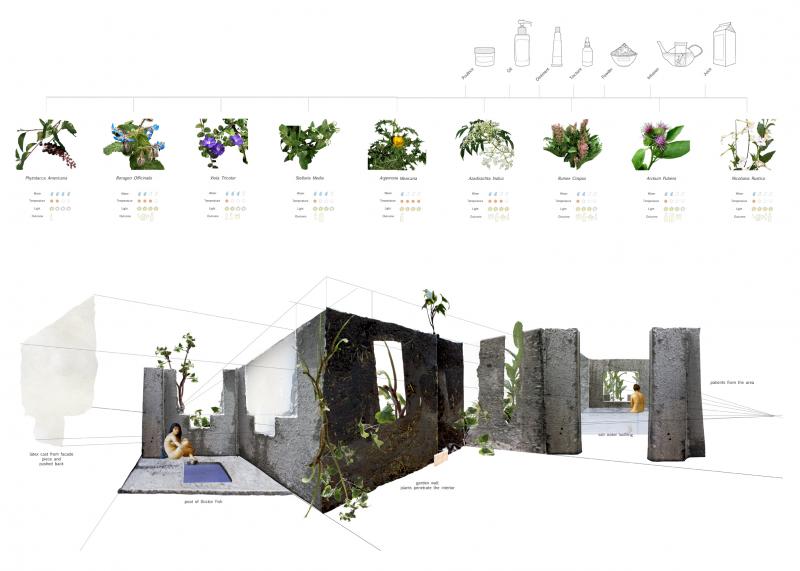
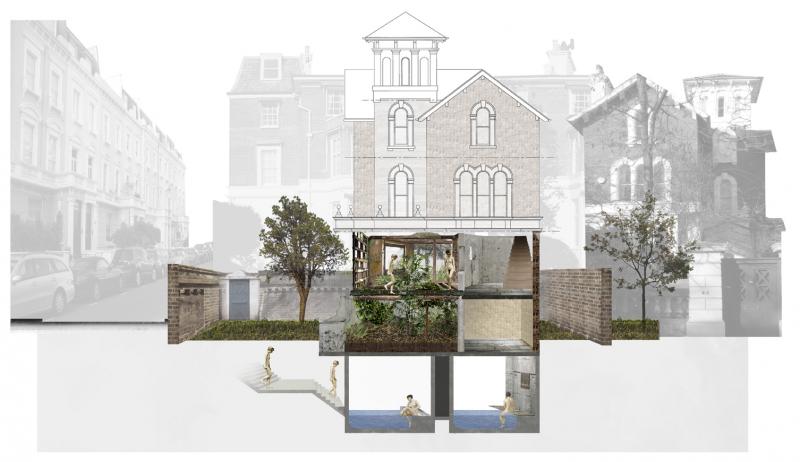
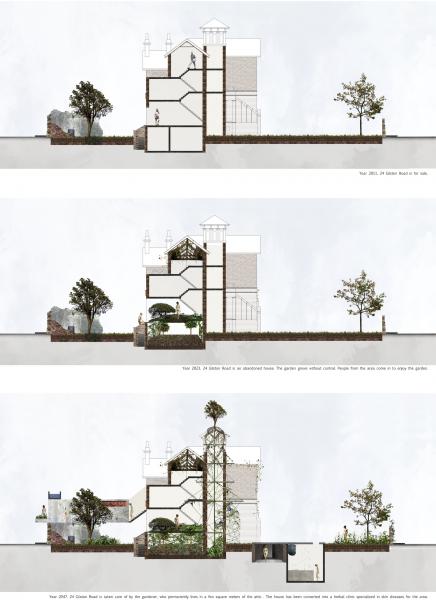
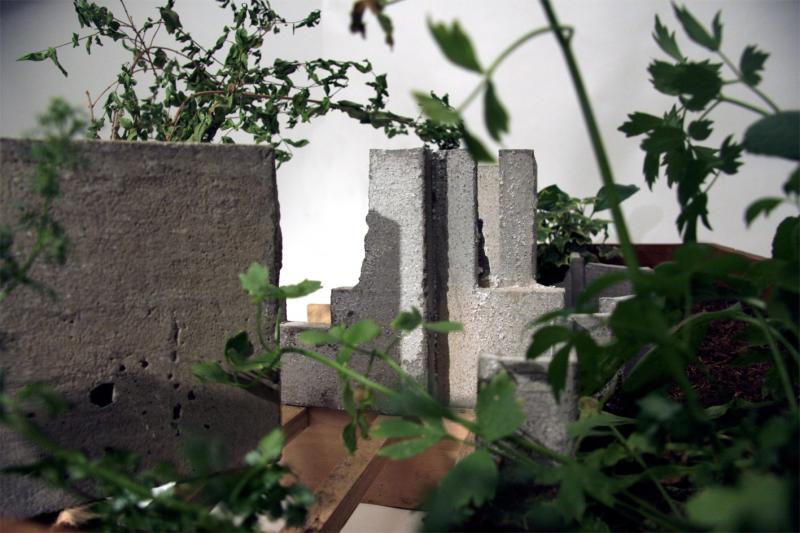
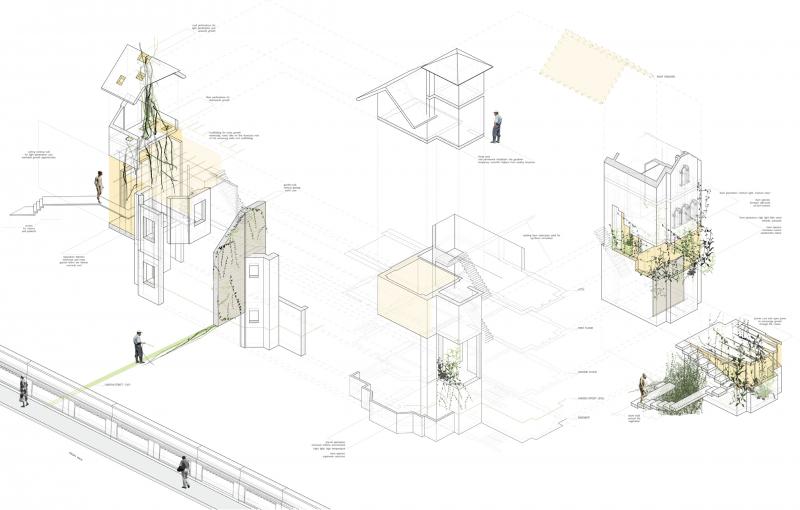



My project offers a reflection on the relationship between Man and Nature by blurring the boundary between house and garden.
The Victorian house at 24 Gilston Road is understood as a series of fragments, both walls and volumes, which can be spatially reconfigured in order to open up zones for vegetation. In addition to the (domestic) garden, medicinal plants are cultivated by the occupier, a gardener, to provide the neighbourhood with herbs to cure skin diseases.
As the vegetation keeps growing, the division between built and natural environments becomes harder to define. Ivy grows into wall cracks, aerial roots reach the ground to take on structural roles to support the building, greatly changing the way in which the house is inhabited, and eventually, as if architecture could have an expiry date, the building is not able to perform its initial functions.